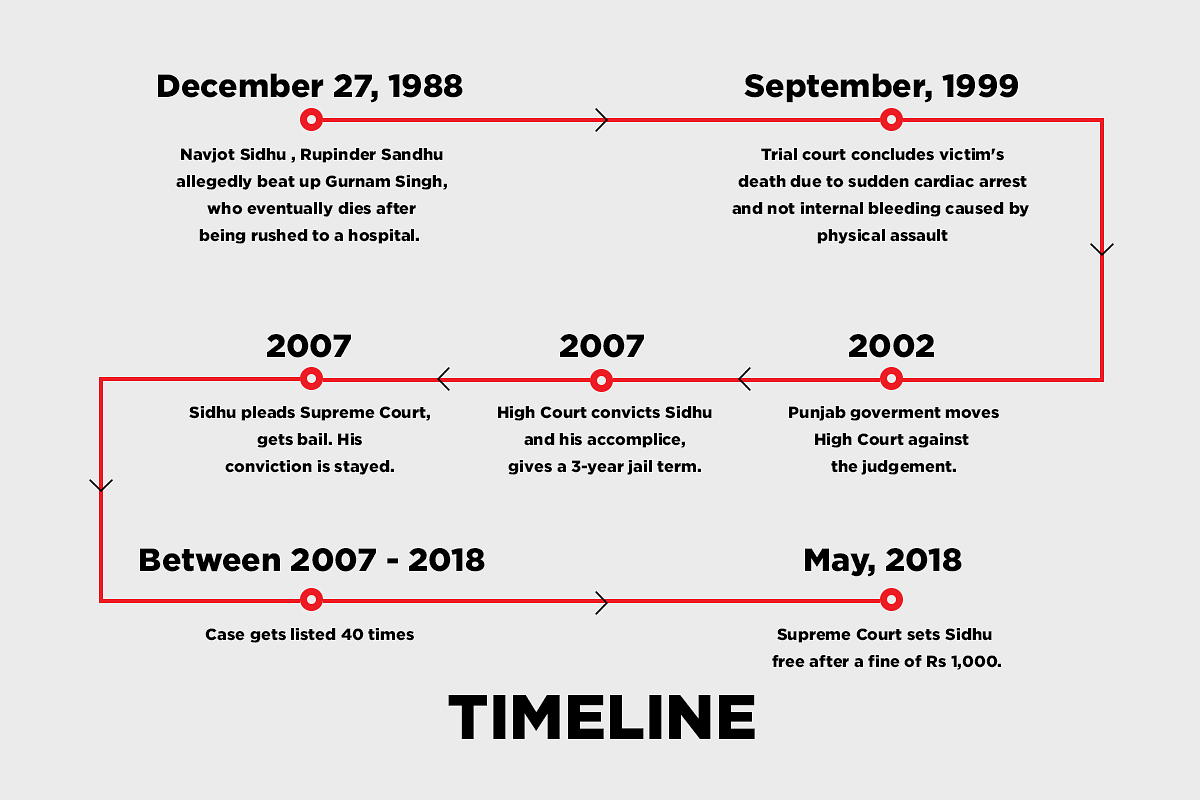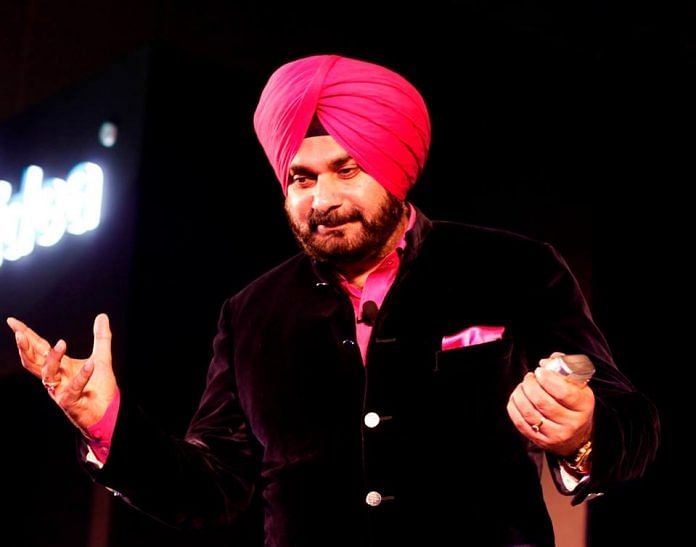A 2016 study, commissioned by the law ministry, says that on average a case takes anywhere between 10 and 15 years to be decided by higher courts in India.
New Delhi: The Supreme Court’s decision setting Punjab minister Navjot Singh Sidhu free — 30 years after he committed a crime — may have come as a relief for the former cricketer. But the acquittal also paints a grim picture about the state of India’s justice system that takes decades to bring a case to finality.
In high-profile cases like Sidhu’s or those involving actor Salman Khan, the system acts swiftly to at least grant them bail, if not decide the cases fully. A 2016 study shows 67 per cent of the people in Indian jails are undertrials — people not convicted of any crime and currently on trial in a court of law. They are often denied bail and languish in jail for years before their cases are decided.
Another 2016 study, commissioned by the union law ministry, says that on average a case takes anywhere between 10 and 15 years to be decided by the high court and the Supreme Court.
Sidhu’s case travels through our courts like most criminal appeals, replete with unexplained delays — often due to the high rate of pending cases in the courts.
The case
The incident occurred in Patiala when Sidhu was a 24-year-old cricketer. The prosecution had argued that Sidhu and co-convict Rupinder Singh Sandhu were allegedly present in a Maruti Gypsy parked near Sheranwala Gate crossing in Patiala on 27 December 1988, while the victim, Gurnam Singh, was on his way to a bank in a Maruti car with two others.
As Gurnam asked the Gypsy occupants to give them the way, the two beat him up before fleeing. Gurnam was declared dead after he was rushed to a hospital.
The apex court itself says that from the FIR, it appears that the case “could have simply been passed off as yet another incident of road rage but for the death of Gurnam Singh”.

The delay
Although the investigation was completed within a year, the trial took more than a decade. Multiple witnesses had to be examined and the prosecution’s task of satisfying the court that the blows Sidhu and his friend rained on Gurnam caused his death proved to be onerous.
It took the trial court 11 years to deliver the judgment. The court concluded that Gurnam Singh’s death was not caused by internal bleeding due to the blows, but it was a case of sudden cardiac death as confirmed by the cardiologist. It said that the prosecution had failed to establish the case beyond reasonable doubt and acquitted both the accused.
The Punjab government then moved the high court against the trial court verdict immediately but it took the high court another eight years to reverse the findings of the trial court. By then, Sidhu was an MP from Amritsar.
In 2007, it convicted Sidhu and his accomplice and sentenced him to a three-year jail term. But the apex court on Sidhu’s plea immediately granted him bail and stayed his conviction.
And for more than a decade, the case would lie in limbo in the top court.
Between January 2007 and finally delivering the verdict on 15 May, the case was listed at least 40 times but most of the hearings took place only after 2017.
Between 2010 and 2017, the case was not listed even once. The case moved from one judge to the other and was simply adjourned.
It was only in 2018 that the case was listed before justices J. Chelameswar and Sanjay Kishan Kaul. Since Chelameswar’s last working day is 18 May before he retires next month, the final arguments were completed in less than 10 hearings and the judgment was delivered within a month of reserving the verdict.






